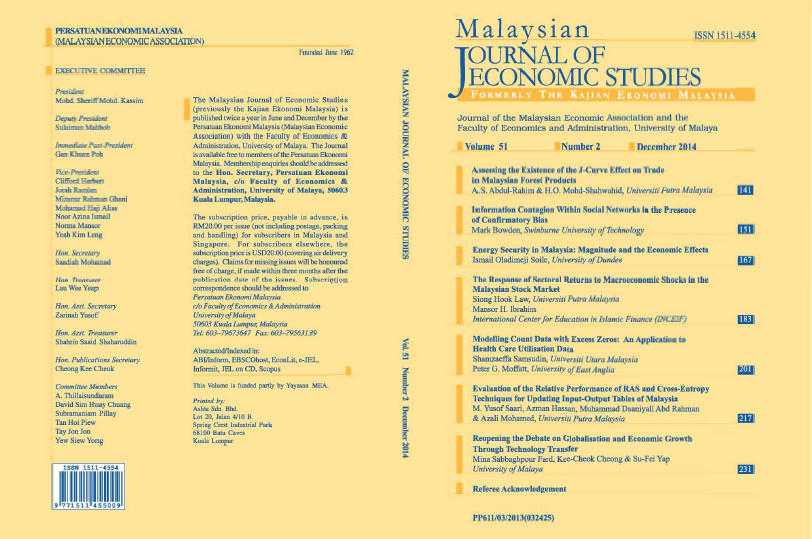Modelling Count Data with Excess Zeros: An Application to Health Care Utilisation Data
Keywords:
Count data, excess zeros, health care utilisation, Poisson model, zero-inflated negative binomialAbstract
This study is concerned with the estimation of microeconometric models of health care utilisation. The data set consists of 14,706 individuals from the General Household Survey for Great Britain, and the dependent variable is the number of General Practitioner (GP) consultations over a 2-week period. A clear feature of this count variable is excess zeros, and it is essential to incorporate this feature in the modelling strategy. Accordingly, in addition to standard Poisson and negative binomial models, zero-inflated, two-part, and latent class models were estimated. The zero-inflated negative binomial model (ZINB) proved, on the basis of several selection criteria, to be superior to other models for this dataset. As anticipated, health related variables had significant effects in determining health care utilisation while socioeconomic variables appeared to be less important, according to the results from the preferred model. Some effects differ quite markedly between the different models, underlining the importance of the type of process used to identify the best-fitting one.

